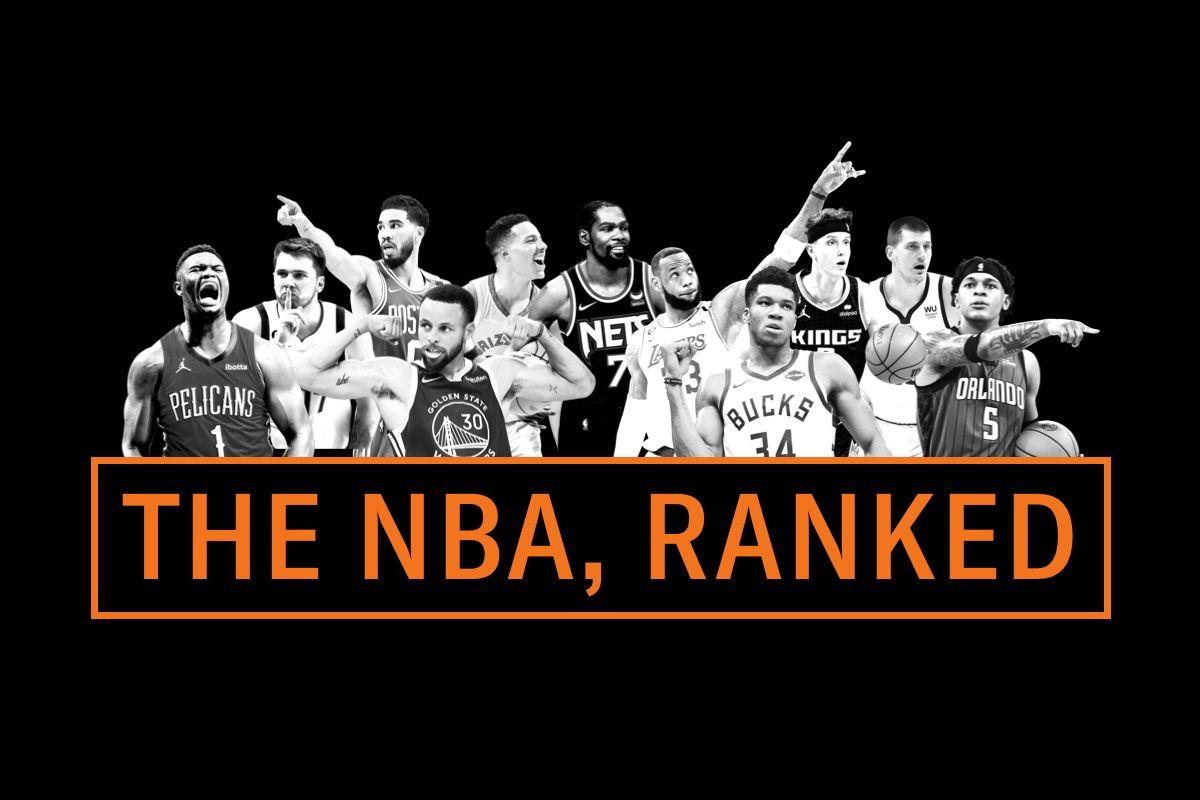
The NBA trade deadline is less than 24 hours away, and with scarcely any transactions thus far, Thursday is bound to turn into a transaction frenzy. So how about a game of point guard roulette to start the proceedings?
Russell Westbrook is now a member of the Utah Jazz (for the time being). Mike Conley is headed to the Minnesota Timberwolves. And D’Angelo Russell is returning to the Los Angeles Lakers, along with a pair of key role players. The deal, in full, sends:
- To Utah: Westbrook, a top-four-protected 2027 first-round pick from the Lakers, Juan Toscano-Anderson, and Damian Jones
- To Minnesota: Conley, Nickeil Alexander-Walker, and three future second-round picks
- To Los Angeles: Russell, Malik Beasley, and Jarred Vanderbilt
This trade perhaps packs less impact than the presence of three former All-Stars would suggest; the 2022-23 title race didn’t budge much as a result of this exchange. Still, it’s a fun one, with lots of moving parts and notable names involved, so let’s dive right into the particulars for each participant—starting with the surprising winner of the deal, the 13th-place team in the West.
For the Lakers
Broadly speaking, the 25-30 Lakers faced three options at this deadline. They could have held firm with a flawed roster, acknowledging this disappointing season as a sunk cost and saving their best trade chips—future firsts in 2027 and 2029—for the offseason or beyond. They could have gone all in, trading both of those picks for a star. Or they could have opted for the middle ground, shedding one pick while hoping smaller upgrades around Anthony Davis and new career-scoring champ LeBron James would be sufficient to propel the team back into the play-in field.
After an earlier appetizer in which it sent three second-rounders to Washington for Rui Hachimura, Los Angeles continued to hedge and evidently decided to walk through door number three. Russell, Beasley, and Vanderbilt aren’t stars; this isn’t a league-shattering deal like the Lakers might have desired for the likes of Kyrie Irving or Zach LaVine.
But the 2022-23 Lakers weren’t just one fix away from contention. Even when James and Davis both played, Los Angeles was just 11-14, with a near even point differential. For the last two seasons, ever since they traded for Westbrook, the Lakers haven’t been able to win even the multi-star minutes convincingly.

The Westbrook project was a failed experiment from the beginning—which some analysts surmised right away, since it added a player who didn’t fit next to LeBron and Davis, subtracted key role players like Kyle Kuzma, and cost them a chance to pursue other trade targets like Buddy Hield.
The Lakers thought they could harness Westbrook’s prolific production in a new Big Three alignment. They were wrong. And this deal—replacing Westbrook with multiple role players—represents a reversal of the move that brought him to town in the first place, where they consolidated multiple role players into one past-his-prime star.
Although they aren’t big, bold-faced stars like the Lakers typically chase, Russell, Beasley, and Vanderbilt each fit much better in L.A.
First, they should offer a tremendous spacing upgrade around the Lakers’ two stars, who prefer to get their buckets inside. The Lakers rank 26th in 3-point percentage and 29th in made 3s, with Lonnie Walker IV being their only player shooting at an above-average clip on decent volume. (While reading this chart, know that the league average on 3s this season is 36 percent.)
Lakers 3-Point Shooters
Beasley is a high-frequency chucker; among rotation players, he’s a hair behind Steph Curry for the most 3-point attempts on a per-possession basis. But he connects at a solid clip and warrants constant defensive attention, so he’ll slot into a familiar player archetype that LeBron has always enjoyed playing alongside.
Based on his 2022-23 performance alone, Russell—the Lakers’ no. 2 pick back in 2015—is actually the best player in this deal. That might come as a surprise to some national fans, who watched the much-maligned point guard start the season in a terrible funk, paralleling his team’s awful first month. But Russell has quietly turned in a productive campaign, with his best-ever shooting efficiency by far.

That upward spike stands out, especially compared with Westbrook, whom Russell will effectively replace in L.A.’s rotation (even if he starts, while Westbrook had turned into a sixth man). Westbrook’s 50 percent true shooting mark is a full 10 points lower than Russell’s, and he ranks 190th out of 193 qualifying players this season. Russell ranks 63rd—one spot, incidentally, behind Kyrie.
Vanderbilt isn’t much of a shooter, but he adds a different element that this Lakers team lacks: an interior defensive presence. Until his addition, the Lakers had one—and only one—solid defender inside, so they naturally cratered when Davis sat, falling from the 75th percentile defensively (111.9 points allowed per 100 possessions) with Davis on the floor, per Cleaning the Glass, to the 20th percentile (118) when he was off. Thomas Bryant is a skilled offensive player with a deft touch; he’s not a defensive answer when Davis rests. Now, they have a much more workable backup, who can also in theory play as the third man in LeBron-Davis frontcourts.
The downside of opting for role players is obvious: They don’t raise the Lakers’ ceiling as much as a player worth both first-round picks would, and the Lakers are so far behind in the West that they might need a much higher ceiling to realistically compete. As is, this roster still presents major issues: They have frightfully few wing defenders—neither Russell nor Beasley helps on that end of the floor—and Davis hasn’t looked the same since his recent return from injury.
But the Lakers didn’t have to spend much to round out their roster for at least an honest attempt at a playoff push. Frankly, one might have expected shedding Westbrook’s contract alone to cost a first-round pick—and the Lakers were able to make that deal, and give that pick top-four protections, and add three useful players to their end of the bargain. The 2027 first will reportedly convert into a second-rounder if it lands in the top four, which means L.A. can trade its 2029 first-rounder without running afoul of the Stepien Rule too.
Ultimately, the Lakers probably won’t make a deep playoff run, even with Russell, Beasley, and Vanderbilt aboard; heck, they might still miss out on the playoffs, given their current deficit and all the competition in the middle of the Western Conference. But they didn’t make a rash overpayment in their attempt to not waste another magical LeBron season. For both their short- and long-term prospects, that restraint might be the most important element of this deal.
For the Timberwolves
Read that paragraph about Russell again, and look at that true-shooting graph, and you might be confused about the Timberwolves’ motivation to make this trade. Forget about the fringe player and second-round picks: For all intents and purposes, they swapped their max-contract point guard, famously Karl-Anthony Towns’s friend and the player for whom they traded Andrew Wiggins and a juicy first that became Jonathan Kuminga, for a 35-year-old point guard averaging just 10.7 points per game, his lowest figure in 15 years.
And yet, this swap makes all the sense in the world for Minnesota because Conley fits the Timberwolves’ needs so much better than Russell did. At his best, Russell is a high-volume guard, who peaked with a 32 percent usage rate in his All-Star season in 2018-19. But the Wolves don’t need more high-volume ball handlers next to the surging Anthony Edwards and—when he returns from injury—Towns. Part of the reason for Russell’s improved efficiency this season is that his usage had fallen to a career low.

Conley, conversely, is a pass-first point guard whose usage has almost always been as low as—or lower than—Russell’s is now. The former Grizzlies and Jazz guard is an organizer for a team in desperate need of organization, and will presumably be much happier to serve as Edwards’s copilot than the score-first Russell.
With a partially guaranteed $24 million contract for next season, moreover, Conley offers a better medium-term solution for Minnesota’s point guard position than Russell, who will reach free agency this summer and would have caught the Wolves in an uncomfortable trap. Either they would have extended him, despite his awkward fit on the roster, or they would have lost him for nothing.
Again, just as with the Lakers’ side, Minnesota’s deadline move isn’t likely to alter the balance of power in the West. But even if Conley isn’t a talent upgrade over the nearly-decade-younger Russell, he represents a logical sidestep for a franchise with few other routes to improvement after last summer’s blockbuster trade for Rudy Gobert, Conley’s former pick-and-roll partner in Utah.
For the Jazz
Utah’s surprisingly hot start, it turns out, was not meant to last: The formerly first-place Jazz are 15-22 since a 12-6 start, and although they could have kept pushing for a play-in berth, they appear content to start revving the tank’s engines and reversing into lottery position. After all, given the massive pick hauls they acquired for Gobert and Donovan Mitchell, plus individual explosions from the likes of All-Star Lauri Markkanen and rookie Walker Kessler, this season is already a success for the franchise’s long-term aims.
It’s not a particular surprise, then, that Utah would trade non-core players like Conley, Beasley, and Vanderbilt at the deadline; Vanderbilt is the youngest member of that trio, and he’d fallen behind Kessler in the Jazz rotation. Additional Utah players like Kelly Olynyk might be dealt within the next day, as well. (As for the veteran Westbrook, the Jazz may buy out the rest of his contract, allowing him to sign with a guard-needy team like the Clippers or Bulls.)
Yet even amid that logical framework, this deal puzzles from a Jazz perspective—more so than for the Lakers and Timberwolves, even as Utah landed the only first-round pick in the deal. Is a single protected pick really the best return that Jazz CEO Danny Ainge could find for three useful players? Last week, Hoops Hype reported the Jazz had been seeking “the equivalent of a first-round pick” to acquire each of Beasley and Vanderbilt. That may have been an ambitious ask, but there’s a long way from multiple first-round picks to one sole protected first four years into the future.


